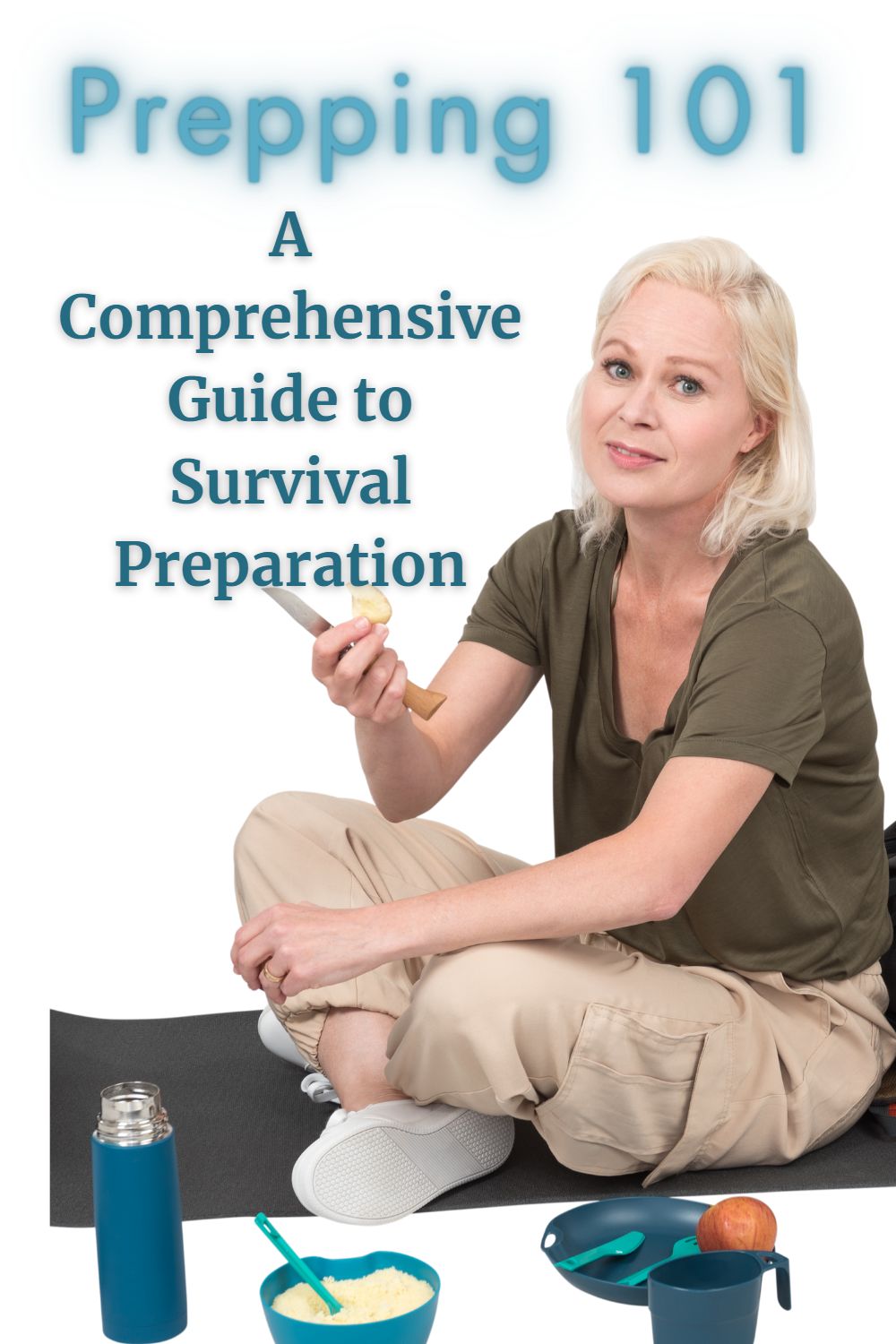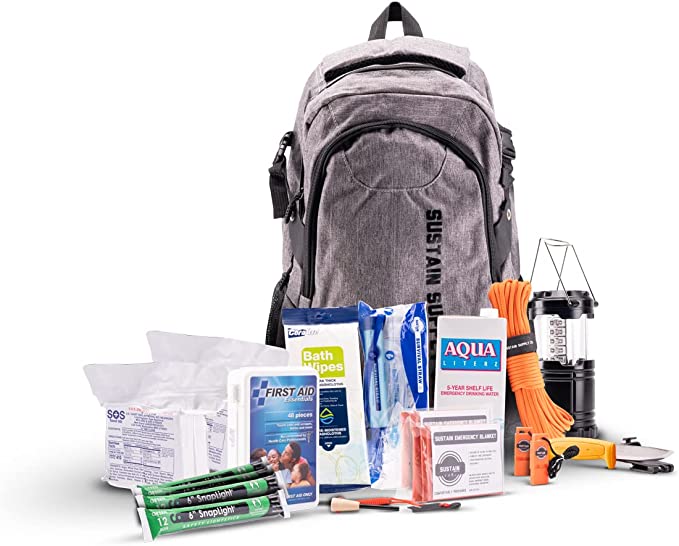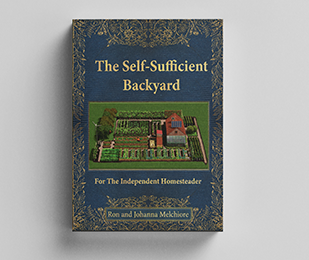Prepping 101: A Comprehensive Guide to Survival Preparation

Prepping 101: A Comprehensive Guide to Survival Preparation
Prepping, or the act of preparing for emergencies or disasters, has gained popularity in recent years.
With natural disasters, political instability, and economic uncertainty becoming more common, many people are taking steps to be prepared for any situation.
But what exactly is prepping, and how do you get started? In this guide, we’ll answer common questions about prepping, including the minimum requirements, cost, and the differences between preppers and survivalists.
We’ll also cover the prepper rule of 3, the 80/20 rule, the number of guns a prepper should have, and the different types of preppers, including urban and doom preppers.
What is Prepping?
Prepping is the act of preparing for emergencies or disasters by stockpiling supplies, learning skills, and making plans for the worst-case scenario.
Prepping can range from simple steps like keeping a first-aid kit in your car to more extreme measures like building a bunker.
Prepping can be motivated by various factors, including natural disasters like hurricanes and earthquakes, political instability, economic collapse, or even a global pandemic.
Prepping allows individuals and families to be self-sufficient during a crisis and have the necessary resources to survive without relying on outside help.
What is the Prepper’s Minimum?
The prepper’s minimum refers to the basic supplies and equipment that every prepper should have in case of an emergency.
The minimum requirements can vary based on the individual’s needs, the type of emergency, and the length of time they expect to be without assistance.
The following items are typically considered part of the prepper’s minimum:
Water: One gallon of water per person per day for at least three days.
Food: Non-perishable food items that can last for at least three days, such as canned goods, energy bars, and dried fruit.
First-aid kit: A first-aid kit that includes bandages, gauze, antiseptic wipes, and pain relievers.
Flashlight and extra batteries: A reliable flashlight and extra batteries or other light sources.
Radio: A battery-powered or hand-cranked radio to stay informed during an emergency.
Cash: Small bills and coins for emergency purchases or transportation.
Emergency blanket: A space blanket or emergency blanket to keep warm in case of cold weather.
Whistle: A whistle to signal for help if trapped or lost.
Here's a Basic Bugout Bag From Amazon Click Picture for more Info
How Much Does the Average Prepper Spend?
The amount of money a prepper spends can vary widely depending on their level of preparedness and how much they choose to invest in supplies and equipment.
Some preppers may spend a few hundred dollars on basic supplies, while others may invest thousands in building a bunker or stockpiling large amounts of food and water.
A 2019 survey conducted by Outdoor Life found that the average prepper spent between $500 and $1,000 per year on prepping supplies.
However, the survey also found that nearly 50% of preppers spent more than $1,000 per year on prepping.
While prepping can be expensive, it’s important to prioritize and invest in the most essential items first.
Preppers can also save money by buying items in bulk, shopping sales and clearance deals, and learning how to make their own supplies.
What Percentage of People Are Preppers?
It’s difficult to determine the exact percentage of people who are preppers since prepping can vary widely in scope and intensity.
However, a 2017 survey by the American Preppers Network found that approximately 8.7 million households in the United States considered themselves preppers.
Doomsday preppers, on the other hand, believe that society will experience a catastrophic event that will collapse the current system.
They stockpile weapons, food, and supplies and may have underground bunkers or shelters to protect themselves and their families.
Some even believe in conspiracy theories and prepare for government takeover or alien invasion.
What is the prepper rule of 3?
The prepper rule of 3 is a guideline that suggests prioritizing your survival needs in order of importance.
The rule states that humans can survive:
- 3 minutes without air
- 3 hours without shelter in extreme conditions
- 3 days without water
- 3 weeks without food
This rule can help preppers prioritize their preparations and ensure that they have the essentials to survive a disaster.
What is the 80 20 rule prepping?
The 80 20 rule, also known as the Pareto principle, states that 80% of your results come from 20% of your efforts.
When it comes to prepping, this means that 80% of your needs can be met with 20% of your supplies.
This rule suggests that preppers should focus on the most important items, such as water, shelter, and food, and not get bogged down in collecting unnecessary gear or supplies.
How many guns should a prepper have?
The number of guns a prepper should have is a hotly debated topic within the prepper community.
Some believe that one handgun and one rifle is enough, while others stockpile dozens of firearms.
The truth is that the number of guns a prepper needs depends on their individual circumstances, preferences, and level of training.
Some factors to consider when deciding on the number of guns to have include the type of disaster, the level of societal breakdown, and the likelihood of encountering dangerous animals or people.
Preppers should also consider their ability to maintain and repair their firearms and ensure that they have enough ammunition to last them for an extended period.
What is an urban prepper?
An urban prepper is someone who lives in a city or urban area and prepares for disasters and emergencies that may occur in an urban environment.
Urban preppers face different challenges than their rural counterparts, such as limited space, storage options, and access to resources.
Urban preppers may focus on building their bug-out bags or emergency kits with items specific to urban survival, such as a dust mask for air pollution or a crowbar for urban navigation.
They may also focus on developing skills such as urban gardening, self-defense in crowded areas, and navigating a gridlocked city.
What is a doom prepper?
A doom prepper is someone who prepares for the end of the world as we know it (TEOTWAWKI).
They believe that a catastrophic event, such as a nuclear war, pandemic, or asteroid impact, will wipe out the majority of the world's population and that they must prepare to survive in a post-apocalyptic world.
Doom preppers often stockpile large quantities of food, water, and supplies and may have elaborate underground bunkers or shelters.
They may also focus on building communities of like-minded individuals who can band together to survive and rebuild society in the aftermath of a disaster.
Conclusion
In conclusion, prepping is a personal decision that should be based on individual circumstances, risks, and goals.
Whether you are a rural, urban, or suburban dweller, there are prepping strategies and techniques that can help you and your loved ones to survive in case of a disaster.
The prepping lifestyle requires a lot of dedication, discipline, and planning, but it can ultimately provide you with peace of mind and the ability to face any challenge that comes your way.
By following the minimum prepping rule, the 80/20 rule, and the prepper rule of 3, you can start preparing for the worst while hoping for the best.
Remember that prepping is not just about stockpiling goods and weapons; it's also about building community, acquiring skills, and having a positive mindset.




